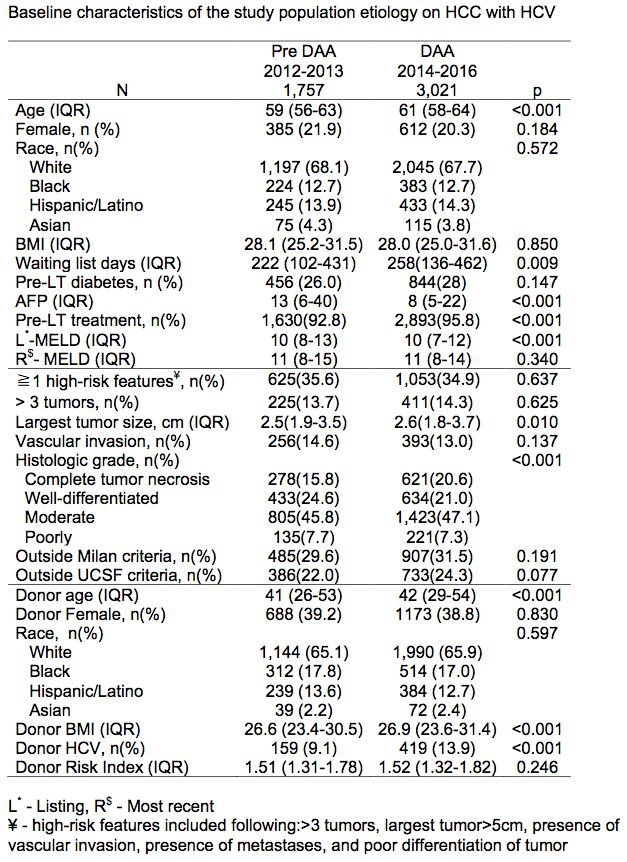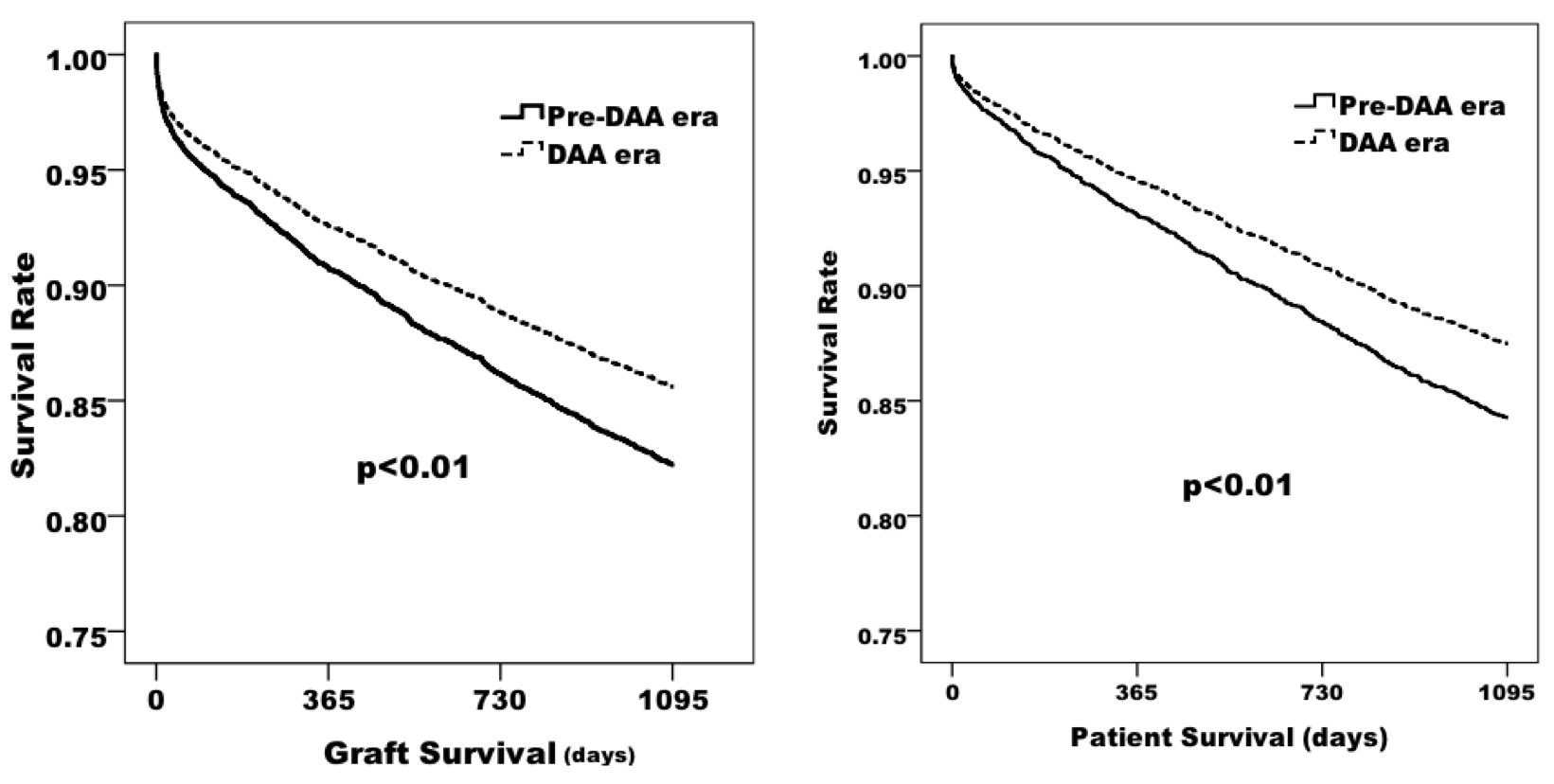Improving Liver Transplantation Outcomes for Hepatitis C Associated Hepatocellular Carcinoma in Direct-Acting Antiviral Therapy Era
Surgery, Westchester Medical Center/New York Medical College, Valhalla, NY
Meeting: 2021 American Transplant Congress
Abstract number: 1118
Keywords: Graft survival, Hepatitis C, Hepatocellular carcinoma, Survival
Topic: Clinical Science » Liver » Liver: Hepatocellular Carcinoma and Other Malignancies
Session Information
Session Name: Liver: Hepatocellular Carcinoma and Other Malignancies
Session Type: Poster Abstract
Session Date & Time: None. Available on demand.
Location: Virtual
*Purpose: Direct-acting antiviral (DAA) therapy has transformed the outcomes of liver transplantation(LT) in patients with hepatitis C virus (HCV). The aim of this study was to analyze the effect of DAA treatment for HCV-associated hepatocellular carcinoma (HCC) in LT.
*Methods: We analyzed data from the United Network for Organ Sharing between 2012-2016. We defined as pre-DAA era between 2012-2013 and DAA era between 2014-2016. We included the patients confirmed as HCC on explant and evaluated demographics and the tumor features on explant of HCC during the study periods.
*Results: 7,716 liver transplants for HCC were performed during the study periods and HCV-associated HCC were 4,778 (62%). In DAA era, median recipient age was older and median days of waiting list were longer (61 vs 59; 258 vs 222 days p<0.01, respectively). Pre-LT treatment rate was higher and AFP before transplant was lower (95.8 vs 92.8 %; 13 vs 8 ng/ml p<0.01, respectively). For donor, median donor’s age, donor BMI and rate of HCV significantly increased in DAA era (42 vs 41; 26.9 vs 26.6; 13.9% vs 9.1%, p<0.01, respectively). In pathology, there was no significant difference in high risk features (p=NS), however, rate of completed tumor necrosis was significant higher in DAA era (20.6 vs 15.8%, p<0.01). Compared to pre-DAA era, one-year graft survival and patient survival were same (90.7% vs 89.7%; 90.8% vs 89.8%, p=NS, respectively), however, three-year graft survival and patient survival had significantly improved in DAA era. (85.0% vs 80.8%; 86.9% vs 83.3%, p<0.01, respectively). In cox regression multivariable analysis, DAA era (hazard ratio [HR], 0.79; p<0.01), pre-LT diabetes (HR, 1.31; p<0.01), high AFP per 100 (HR, 1.03; p<0.01), high MELD score per 10 (HR, 1.16; p=0.04), histologic grade (HR 1.29; p<0.01), high risk features (HR, 1.70; p<0.01), and high DRI (HR, 1.50; p<0.01) had significantly impacted for three-year graft survival. Pre-transplant treatment and donor HCV status did not affect the outcomes.
*Conclusions: DAA has a significant impact of LT. In DAA era, graft survival and patient survival for HCV associated HCC have been significantly improving.
To cite this abstract in AMA style:
Okumura K, Sogawa H, Veillette G, John D, Diflo T, Bodin R, Wolf DC, Nishida S. Improving Liver Transplantation Outcomes for Hepatitis C Associated Hepatocellular Carcinoma in Direct-Acting Antiviral Therapy Era [abstract]. Am J Transplant. 2021; 21 (suppl 3). https://atcmeetingabstracts.com/abstract/improving-liver-transplantation-outcomes-for-hepatitis-c-associated-hepatocellular-carcinoma-in-direct-acting-antiviral-therapy-era/. Accessed December 14, 2025.« Back to 2021 American Transplant Congress


